Just imagine California in 1848, before the towering skyscrapers and sprawling mansions dominated the skyline. Picture a vast state that was once a part of the Spanish colony of New Spain, with simple churches built along its coast by Franciscan friars. Unlike other parts of the country that were influenced by English architectural styles, California, Florida, Texas, and the Southwest developed their unique architectural styles rooted in their Spanish heritage.
By the late 19th century, the Spanish influence, fueled by the growing Arts and Crafts Movement, became firmly established in the country's architectural landscape. Architects like Arthur Page Brown, Frederick Roehrig, Julia Morgan, and Paul Williams played pivotal roles in popularizing the Mission Revival style.
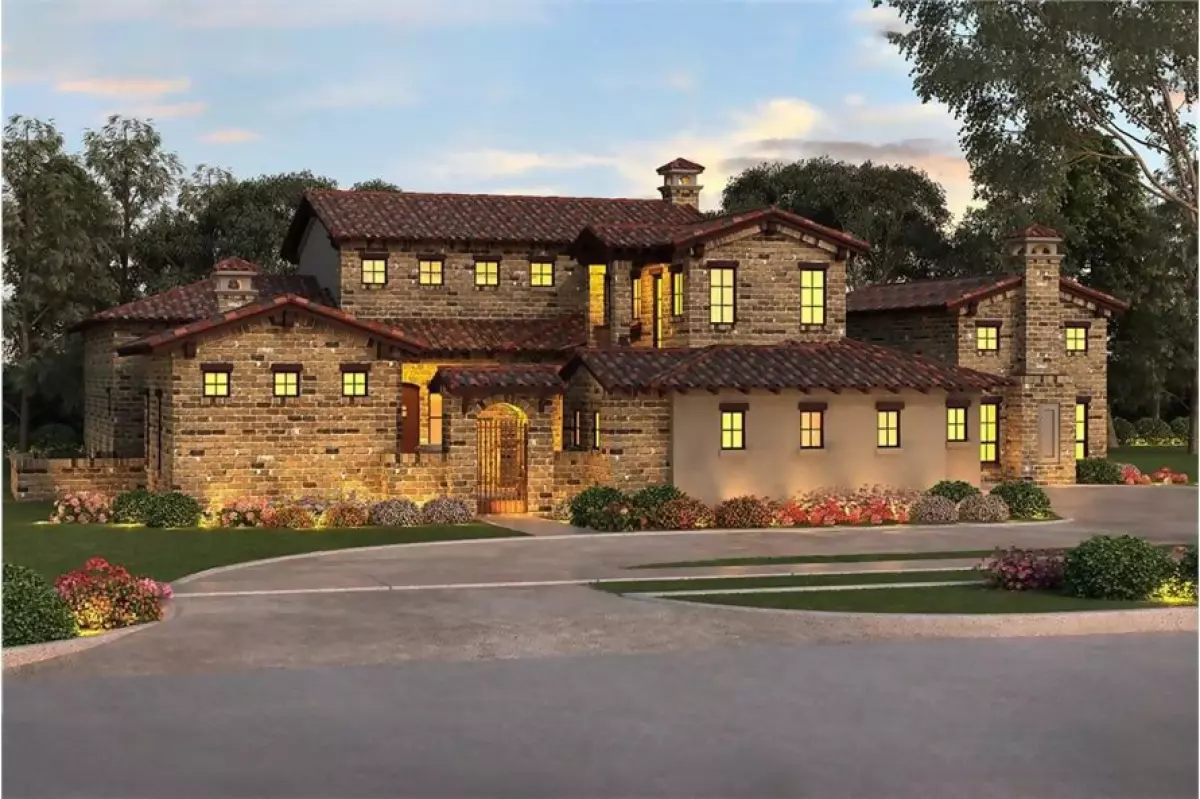 Southwest style home with brown tile roof and stone exterior
Southwest style home with brown tile roof and stone exterior
As the style evolved, architects in different regions of the country added their own interpretations. This led to variations like the California Mission style dominant on the West Coast and Southwest, the Spanish Revival style mostly found in the South (Florida, Texas), and other styles such as Pueblo Revival, Territorial, Monterey, and Mediterranean.
Let's explore the Mission Revival style and its captivating features that give it a distinct and charming allure.
Features of Mission Revival Style Homes
1. Stucco Exterior Walls
Inspired by the simple Spanish mission churches, Mission Revival style homes feature smooth and unadorned stucco exterior walls. The simplicity of these walls adds to the overall elegance of the architectural design.
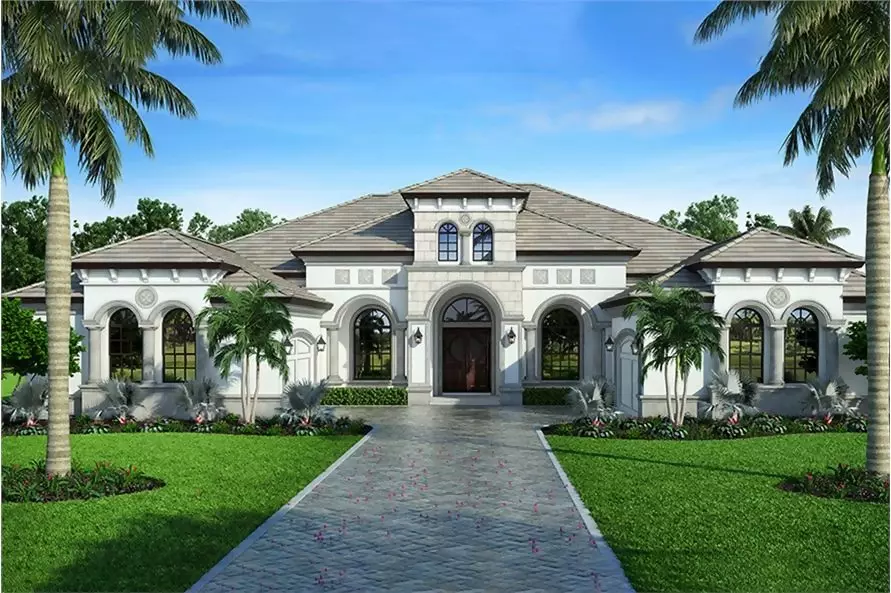 Mediterranean style home with light-colored stucco walls
Mediterranean style home with light-colored stucco walls
2. Arched Windows and Doors
The arched windows and doors of Mission Revival homes provide a striking contrast to the plain stucco facades. These arched openings, often arranged symmetrically, add a touch of drama to the overall design.
 Light gray stucco Mediterranean style home with its arched entryway and windows
Light gray stucco Mediterranean style home with its arched entryway and windows
3. Scalloped Parapets
Decorative parapets, with their curved and scalloped appearance, serve as ornamental elements on the main roof, dormers, or porches. These visually appealing features add a touch of elegance to the Mission Revival style.
4. One or Two Square Towers
Symbolizing the mission church and its bell tower, chimneys, and sometimes lookout towers with spiral stairs, are designed to resemble bell towers. These towers add vertical interest to the Mission Revival homes.
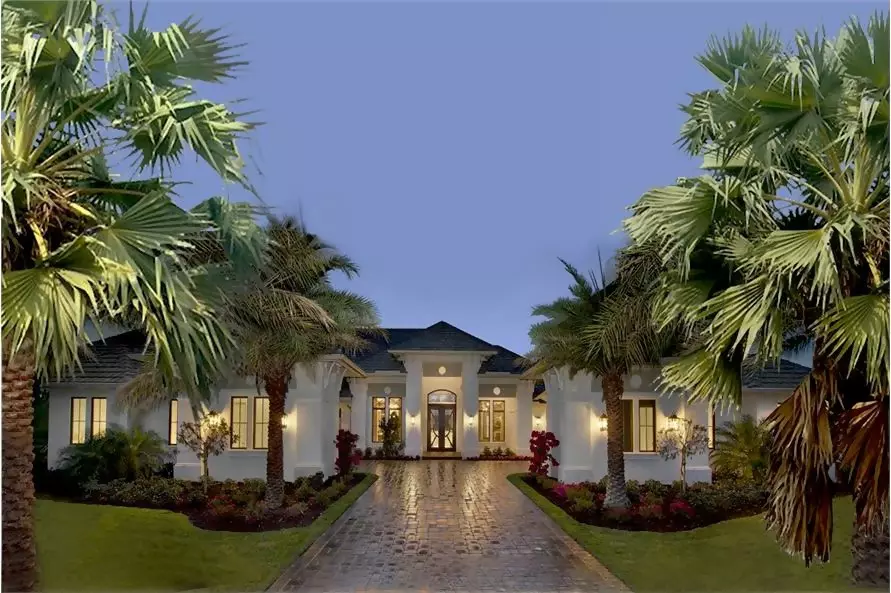 Spanish style home with chimneys that resemble California Mission bell towers
Spanish style home with chimneys that resemble California Mission bell towers
5. Courtyards and Gardens
Courtyards and gardens, adorned with colorful plantings and pergolas, create a welcoming and inviting atmosphere. These outdoor spaces add a touch of nature and tranquility to Mission Revival homes.
 U-shape Mission Revival Spanish style home with a landscaped courtyard
U-shape Mission Revival Spanish style home with a landscaped courtyard
6. Low-Pitched Hip or Gable Roofs
Mission Revival, Mediterranean, and Spanish architecture often feature roofs with low slopes, red tiles, and wide overhanging eaves. These roofs protect the homes from the intense summer sun and are characteristic of the Mission Revival style.
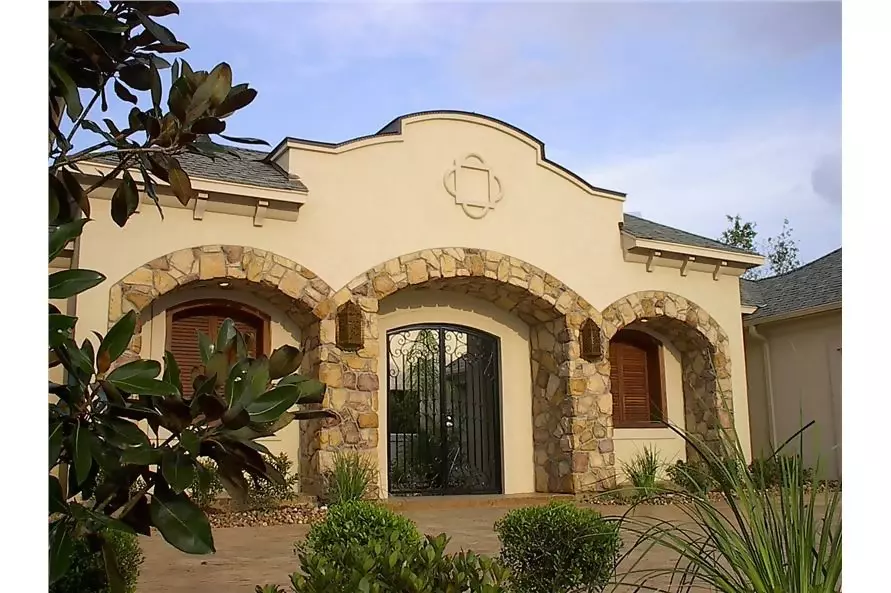 Spanish style home with a beige stucco, scalloped parapet, and red-tile hip roof
Spanish style home with a beige stucco, scalloped parapet, and red-tile hip roof
7. Round or Quatrefoil Windows
Commonly found in art, architecture, and traditional Christian symbolism, round or quatrefoil windows add a touch of elegance and intrigue to Mission Revival homes. These windows feature symmetrical shapes with four lobes or foils, often representing the Gospels.
 Spanish style home with beige stucco, curved windows, and quatrefoil in the front facade
Spanish style home with beige stucco, curved windows, and quatrefoil in the front facade
8. Covered Arcades
Covered arcades, similar to courtyards, patios, or porches, provide shelter from the sun and rain. These outdoor areas, supported by large columns or pillars, contribute to the overall elegance and functionality of Mission Revival and Spanish Revival homes.
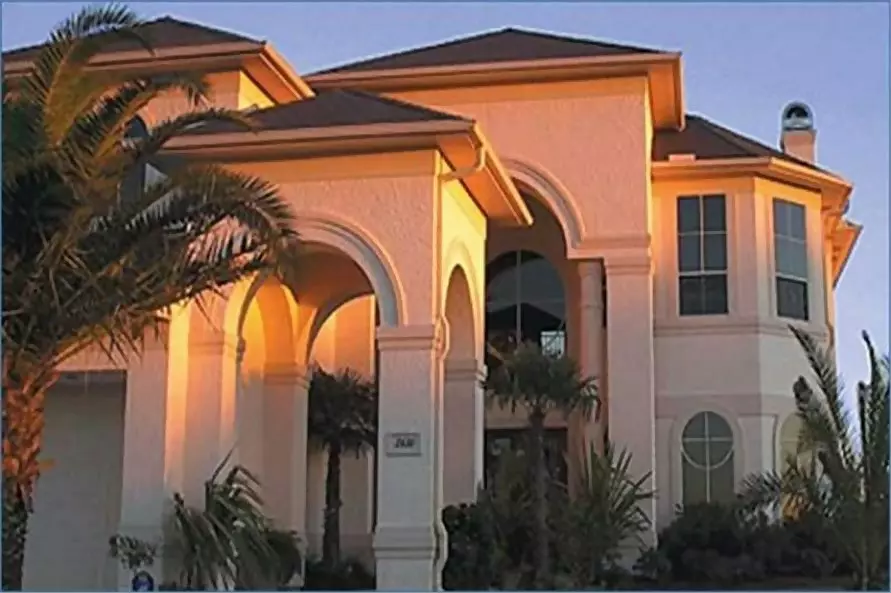 Two-story Spanish style house with covered courtyards called arcades
Two-story Spanish style house with covered courtyards called arcades
9. Understated Decorative Elements
While more intricate than those found in historic mission churches, the decorative elements used in Mission Revival homes are still understated and simple. The use of tiles, ironwork, and wood adds a touch of charm without overwhelming the overall design.
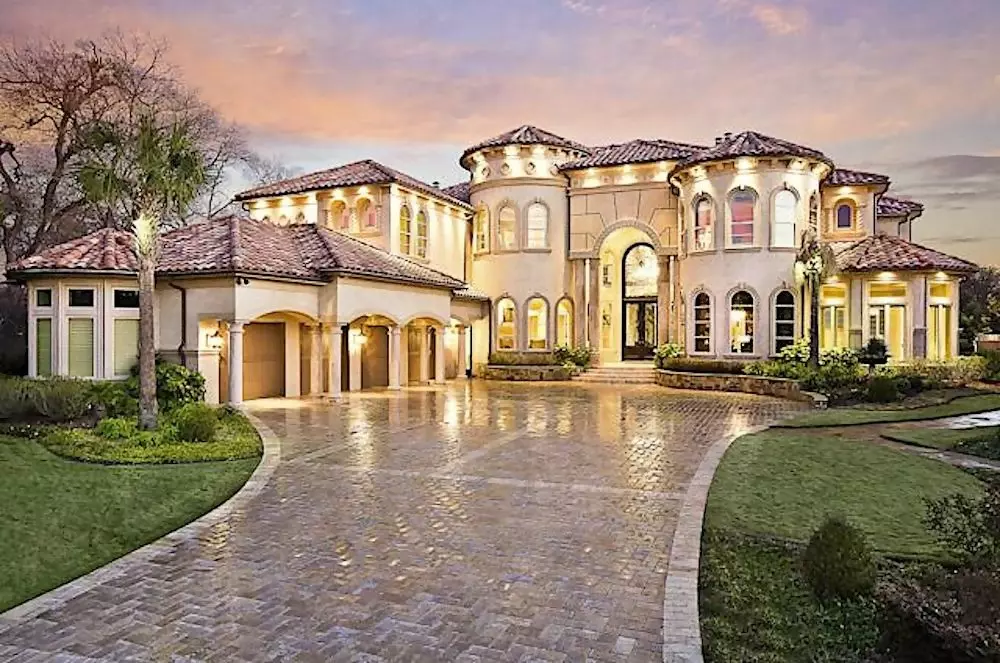 Ornate two-story Spanish style home with a tile roof and stucco siding
Ornate two-story Spanish style home with a tile roof and stucco siding
How Mission Revival (California Mission) Style Began
The Mission Revival style, also known as California Mission Revival, emerged in the late 19th century and reached its peak popularity between 1890 and 1915. This architectural style spread from the West Coast to the Southwest and Florida, becoming a prominent feature of boom-time neighborhoods.
The early Mission Revival homes were predominantly built in California, embracing and celebrating the architectural heritage of the Spanish settlers. The style drew inspiration from the designs of historic Spanish mission churches, incorporating elements such as arched doors and windows, arcades, chimneys resembling bell towers, red-tile roofs, stucco walls, and shaded porches.
Mission Revival homes are particularly suited to areas with tropical or warm climates, which is why they are most prevalent in California, Arizona, the Southwest, and Southern states.
A Brief Look at the Spanish Revival Style
Similar to the Mission Revival style, the Spanish Revival or Spanish Eclectic style emerged in the late 19th century and flourished from 1915 to 1931. Described as fanciful and romantic, Spanish Revival combines elements from Mediterranean, Spanish Baroque, Moorish, and Gothic styles to create a unique and unified appearance.
The Spanish Revival style features low-pitched clay tile roofs, round arch openings, porch arcades with columns, stucco over brick or adobe brick exterior walls, carved wooden doors, decorative window grills, twisted spiral columns, multi-pane windows, and balconies or terraces. It is more elaborately adorned compared to the simpler Mission Revival style.
 Two-story-tall foyer with an elaborate staircase and chandelier
Two-story-tall foyer with an elaborate staircase and chandelier
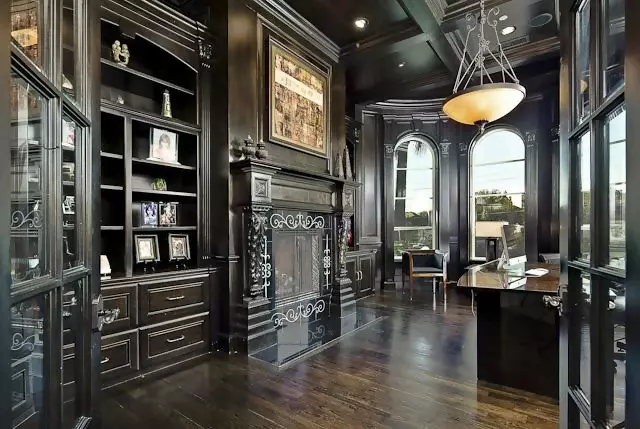 Ornate woodwork in the home office of a Spanish-Mediterranean style home
Ornate woodwork in the home office of a Spanish-Mediterranean style home
 Spanish style home with wood and wrought-iron railings, decorative round window, and twisted spiral columns
Spanish style home with wood and wrought-iron railings, decorative round window, and twisted spiral columns
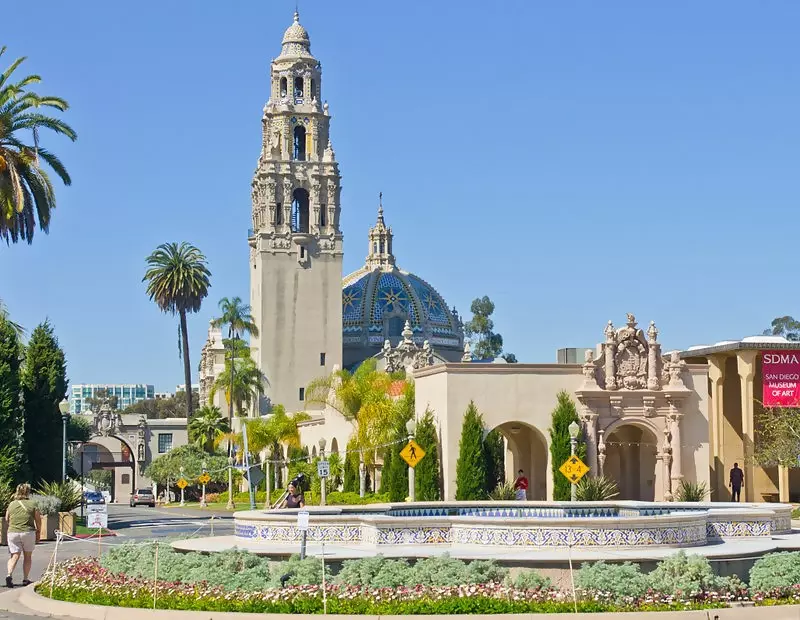 California Quadrangle in Balboa Park, San Diego, CA
California Quadrangle in Balboa Park, San Diego, CA
The Spanish Revival style gained national exposure at The Panama-California Exposition in 1915 in San Diego. Architect Bertram Goodhue designed the fairground complex in the Spanish Colonial style, deviating from the Greek and Roman influences. This exposition played a significant role in popularizing the Spanish Revival style.
While Spanish Revival homes were embraced throughout the country during their peak popularity, their impact was most prominent in California, where the state's early colonial settlements were of Spanish origin. Despite the rise and fall of other architectural styles, the charm and appeal of Spanish Revival architecture have endured in California.
Today, Mission Revival and Spanish Revival styles continue to captivate the architectural world with their timeless blend of Old World charm and modern practicality. These architectural styles have shaped California's landscape, offering a seamless connection between indoor and outdoor spaces.
As we move forward into the 21st century, the captivating allure of Mission Revival and Spanish Revival styles remains, a testament to their enduring appeal.
Footnote: The lead image in this article showcases a beautifully designed Mediterranean style home with Mission Revival and Spanish Revival influences. For more details on this four-bedroom, four-bath residence, click [here](Plan #175-1064).
Additional Sources: Antique Homestyle, Old House Online, Antique Home, Living Places

















